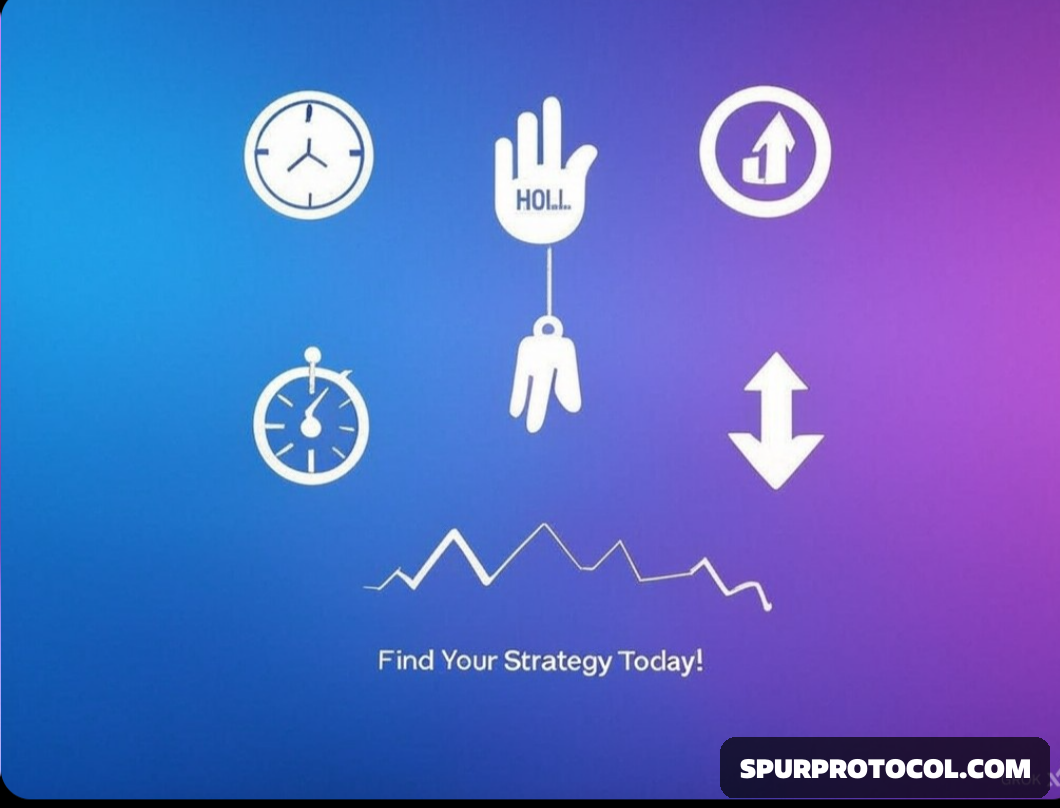Crypto Trading Strategies: From Day Trading To HODLing
Are you ready to dive into the world of cryptocurrency trading but unsure where to start? In this comprehensive guide, we break down the most popular crypto trading strategies—from high-intensity day trading to the long-term HODLing approach.
Go Back

🕒 8:01 AM
📅 Jan 27, 2025
✍️ By blocklynews
Cryptocurrency trading has become one of the most exciting and potentially lucrative ways to participate in the digital economy. However, with great opportunity comes great risk. The volatile nature of crypto markets means that having a solid trading strategy is essential to navigating the ups and downs. Whether you’re a seasoned trader or just starting out, understanding the different approaches can help you align your strategy with your risk tolerance and financial goals.
In this post, we’ll explore some of the most popular crypto trading strategies, from high-frequency day trading to the long-term HODLing approach. Let’s dive in!
Day Trading
What It Is:
Day trading involves buying and selling cryptocurrencies within the same day to capitalize on short-term price movements. Traders often use technical analysis, charts, and indicators to make quick decisions.
Key Features:
- High frequency of trades (multiple trades per day).
- Requires constant monitoring of the market.
- Focuses on small price movements rather than long-term trends.
Suitability:
- Risk Profile: High risk.
- Time Commitment: High.
- Best For: Experienced traders with a deep understanding of technical analysis and market psychology.
Pros:
- Potential for quick profits.
- No overnight exposure to market risks.
Cons:
- Highly stressful and time-consuming.
- High transaction fees due to frequent trading.
- Requires discipline to avoid emotional decision-making.
Swing Trading
What It Is:
Swing trading aims to capture gains over a period of days or weeks by identifying "swings" in price trends. Traders use both technical and fundamental analysis to predict market movements.
Key Features:
- Trades are held for several days or weeks.
- Focuses on medium-term trends.
- Less time-intensive than day trading.
Suitability:
- Risk Profile: Moderate to high risk.
- Time Commitment: Moderate.
- Best For: Traders who can’t monitor the market constantly but still want to capitalize on short- to medium-term opportunities.
Pros:
- Less stressful than day trading.
- Potential for higher returns compared to long-term holding.
Cons:
- Requires a good understanding of market trends.
- Overnight and weekend market risks.
Scalping
What It Is:
Scalping is an ultra-short-term strategy where traders aim to profit from tiny price movements. Positions are often held for just seconds or minutes.
Key Features:
- Extremely high frequency of trades.
- Focuses on small, incremental gains.
- Relies heavily on technical analysis and real-time data.
Suitability:
Risk Profile: Very high risk.
Time Commitment: Very high.
Best For: Professional traders with access to advanced tools and low-latency trading platforms.
Pros:
- Potential for consistent small profits.
- No overnight exposure.
Cons:
- Requires advanced skills and tools.
- High transaction costs due to frequent trades.
- Extremely stressful and demanding.
Position Trading (HODLing)
What It Is:
Position trading, often referred to as "HODLing" in the crypto world, involves buying and holding cryptocurrencies for the long term, regardless of short-term market fluctuations.
Key Features:
- Trades are held for months or years.
- Focuses on long-term growth and fundamentals.
- Minimal trading activity.
Suitability:
- Risk Profile: Low to moderate risk.
- Time Commitment: Low.
- Best For: Investors who believe in the long-term potential of cryptocurrencies and prefer a hands-off approach.
Pros:
- Less stressful and time-consuming.
- Lower transaction fees due to fewer trades.
- Potential for significant returns over time.
Cons:
- Requires patience and a strong belief in the asset.
- Vulnerable to long-term market downturns.
Arbitrage Trading
What It Is:
Arbitrage involves buying a cryptocurrency on one exchange where the price is lower and selling it on another exchange where the price is higher, profiting from the price difference.
Key Features:
- Exploits price discrepancies across exchanges.
- Requires quick execution to capitalize on opportunities.
- Often relies on automated bots.
Suitability:
- Risk Profile: Low to moderate risk.
- Time Commitment: Moderate to high.
- Best For: Traders with access to multiple exchanges and advanced tools.
Pros:
- Low risk compared to other strategies.
- Potential for consistent profits.
Cons:
- Requires significant capital and fast execution.
- Price differences are often small and short-lived.
Dollar-Cost Averaging (DCA)
What It Is:
DCA involves investing a fixed amount of money into a cryptocurrency at regular intervals, regardless of its price. This strategy reduces the impact of market volatility.
Key Features:
- Systematic and disciplined approach.
- Focuses on long-term accumulation.
- Minimizes emotional decision-making.
Suitability:
- Risk Profile: Low risk.
- Time Commitment: Low.
- Best For: Beginners and risk-averse investors.
Pros:
- Reduces the impact of market volatility.
- Simple and easy to implement.
Cons:
- May result in lower returns during bull markets.
- Requires patience and long-term commitment.
Chosing the Right Strategy for You
The best trading strategy depends on your risk tolerance, time commitment, and financial goals. Here’s a quick guide:
- High Risk Tolerance: Consider day trading, swing trading, or scalping.
- Moderate Risk Tolerance: Try swing trading or arbitrage.
- Low Risk Tolerance: Stick to HODLing or dollar-cost averaging.
Remember, no strategy is foolproof. Always do your research, manage your risk, and never invest more than you can afford to lose.
Conclusion
Crypto trading offers a wide range of opportunities, but it’s not a one-size-fits-all endeavor. Whether you’re looking to make quick profits through day trading or build wealth over time with HODLing, the key is to stay informed, disciplined, and adaptable.
What’s your favorite trading strategy? Let us know in the comments below!
